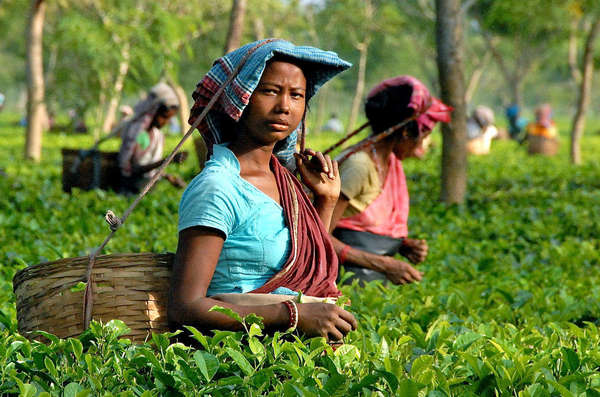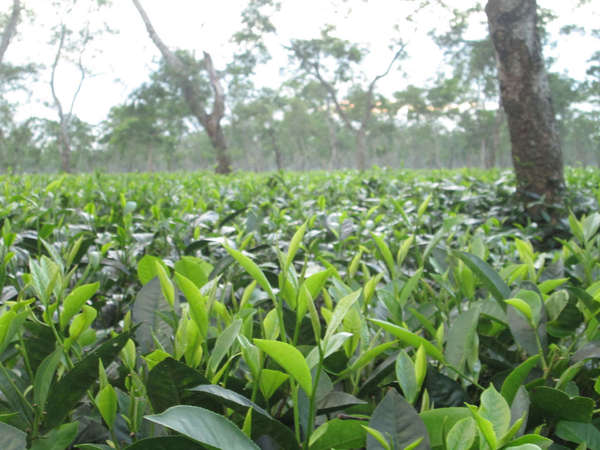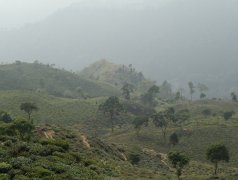Is Assam tea made in India? Introduction to the varieties and planting conditions of Assam Black Tea
Assam is a region famous for its black tea in India. As of 2008, Assam accounted for 55 per cent of India's tea production, producing only a small portion of green and white tea, a proportion even lower than in some areas that historically produced only black tea, although production of these teas has increased in recent years.
Most Assam teas are produced by Assam tea varieties, in contrast to teas from Darjeeling. The Assam variety has larger leaves than the small leaf varieties used in most Darjeeling and most Chinese black teas. The same variety of Assam tea is also grown in other areas, especially in low-lying areas, including Thailand.
There is a problem with militants in Assam; according to the Assam police chief, most of the funding for these groups was cut off in 2001, but the tea industry is the only remaining source of funding for armed groups. In the past, cities and towns faced blackmail from these groups.
Geography and region of Assam
Assam and its surrounding areas are geographically isolated from the rest of India. The state covers an area of about 30285 square miles (78438 square kilometers), roughly the size of Maine, South Carolina, the Czech Republic or Austria.
Although the shape of the state looks unusual on the map, its boundary is close to the geographical boundary between the lowland areas around the Brahmaputra River and its tributaries and the hilly and mountainous areas belonging to other Indian states or Bhutan. There are some exceptions in the hills and highlands on the edge of Assam, or in sporadic highlands surrounded by lowlands.
However, as the Brahmaputra River bends southward into Bangladesh, this geographical continuity ends at the lower end of Assam.

Climate, geography and ecology
Much of Assam has a humid subtropical climate that tends to the warmest end of this climate type, making it similar to a completely tropical climate. Although the winter is slightly colder, frosts are rare, and frosts have never been recorded in mild parts of the area. Although the humidity is high throughout the year, there is an obvious monsoon season in summer and a dry season in winter, which is consistent with the pattern of the Asian monsoon.
The regional change of climate is subtle; the highlands have slightly lower temperatures throughout the year and occasional frosts, but they are still subtropical.
Frequent and severe flooding of the Brahmaputra River and its tributaries hit Assam.
Assam is one of the most biologically diverse regions in the world; it includes tropical rain forests, deciduous forests and vast wetlands. Tropical lowland forests have been reduced to a small part of their original size, but there are still many parks, wildlife shelters and protected wild areas. The mountain forests in this area are relatively complete.

Region and subdivision
Assam is divided into several areas, which we have listed separately. Assam is usually divided into two parts: upper Assam and Lower Assam. Tea is grown in both areas, but more tea, especially high-quality tea, tends to be grown in Upper Assam. Upper Assam includes areas such as Jorhat, Dibrugarh, dhmaji, Golaghat, Charaideo, Lakhimpur, Majuli, Sivasagar and Tinsukia, and sometimes Sonitpur, Karbi Anglong and Nagaon.
Most of the tea in Assam grows at low elevations, which makes it distinct from Darjeeling and other high-altitude teas. One obvious exception is the Kopili estate in Dima Hasao. There are also high-altitude areas in Karbi Anglong, on the edge of other areas bordering * *, Bhutan and other more mountainous areas.
Important Notice :
前街咖啡 FrontStreet Coffee has moved to new addredd:
FrontStreet Coffee Address: 315,Donghua East Road,GuangZhou
Tel:020 38364473
- Prev

Darjeeling aroma how to taste describe where to buy authentic Darjeeling black tea brand recommendation
Darjeeling black tea, commonly known as Darjeeling black tea, is one of the most famous and respected black tea varieties. It is produced in Darjeeling, India, and is located in northeastern India bordering Nepal. Darjeeling black tea is usually classified by red tide, which is the tea harvest season of the year. Darjeeling tea is produced by different tea gardens, and high-quality tea from this area is usually used as a single manor tea.
- Next

School season begins in September! Is Starbucks' limited autumn fortune bag a gimmick or a value surprise worth buying?
September! The beginning of school! When the immortal beast returned, the children were sent into the campus by their parents. There are many photos in WeChat moments celebrating the success of children's enrollment. Don't worry about the children, a variety of secretly observed videos are also circulated on the Internet. Squatting, kneeling, lying on the stomach, climbing the railing, only you can not think of no parents can do. After talking about the children, the big friends are about to start school! (
Related
- Being chased out of the rain in front of Starbucks?! Store: Sheltering from rain under umbrellas poses a safety hazard
- The white moonlight has changed?! Lucky launches "Big Winter Pear American"
- Hand-brewed coffee three-stage method, high-sweet and universal brewing method to share! What does the high sweet water level of hand-brewed coffee mean?
- What is the difference between raw, refined and full espresso coffee? How to extract espresso and taste good?
- A complete list of coffee bean names and their meanings! What is Yejia Shefi coffee? Where is Mantelin coffee?
- What grade does Arida Manor Kaduai coffee beans belong to? What treatment is Arida ASD slow anaerobic sun exposure?
- The milk tea cup becomes smaller?! Overlord Tea Girl launches a new "Return to Yunnan" series
- Accused of selling counterfeit and high-priced coffee beans! Well-known boutique coffee brand "Oukelao" bowed and apologized!
- How to make espresso dumplings? Can I eat coffee and glutinous rice balls together?
- Save the unformed and stagnant powder cakes in one second! What is the problem with stagnant water in the powder bowl of the espresso machine?

